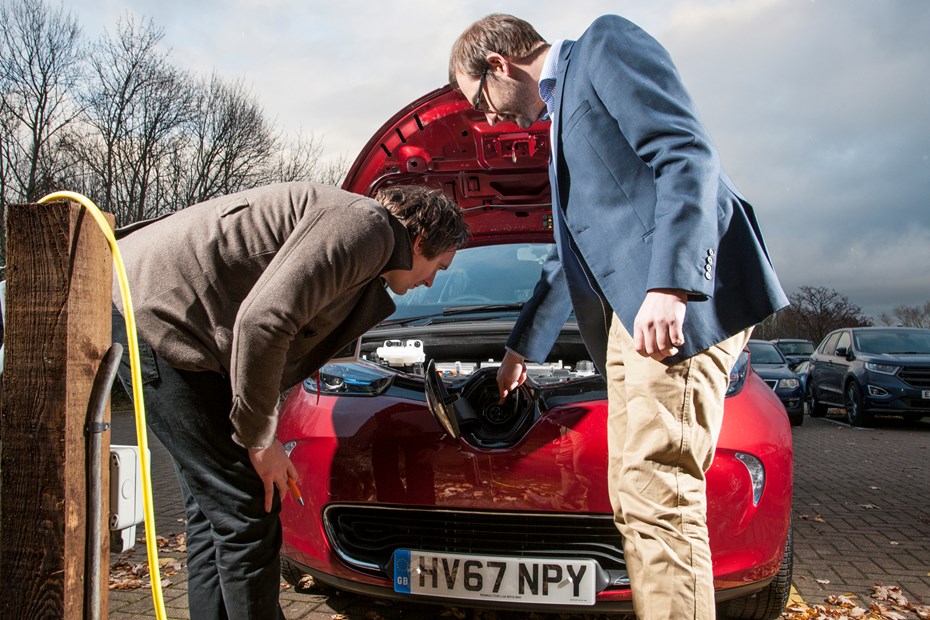New car sales and marketing are tilting, inexorably, towards electric cars ahead of the proposed 2030 ban on new petrol and diesel models. Eventually, it seems, our habits and public spaces will have to adapt to suit – but for many drivers a used electric car makes a great deal of sense right now.
It’s more than a decade since the first genuinely useful EVs joined the UK market and by 2025, up to a quarter of all new car sales in the UK were EVs. In addition, there’s plenty of used stock to go round and used sales are booming. Some 188,382 secondhand EVs changed owner in the UK in 2024 – an increase of 50% on the previous year.
Why buy a used electric car?
Let’s start with the obvious question. Why bother with a used electric car at all? First off, there’s the price. New EVs are pricey. Yes, they’re getting cheaper, but they’re still expensive. Buying used saves thousands and lets you dip your toe in the water without committing your life savings.
It’s also a great way to figure out whether an EV actually fits into your life. Charging habits, range, running costs, it’s all a bit different from petrol. A used one gives you a cheaper way to find out if you’re happy living the plug-in life. Buying a cheap used electric car is a great way of doing that.
Company car drivers and the self-employed might also find tax perks and low-emission incentives make a used EV a smart buy, although with electricity prices being what they are these days, don’t expect it to always be cheaper than running petrol.
But perhaps the biggest reason of all? Electric cars are proving surprisingly reliable. Get rid of all that hot oil, exhaust pipes and rattling pistons, and guess what? There’s not much left to go wrong.
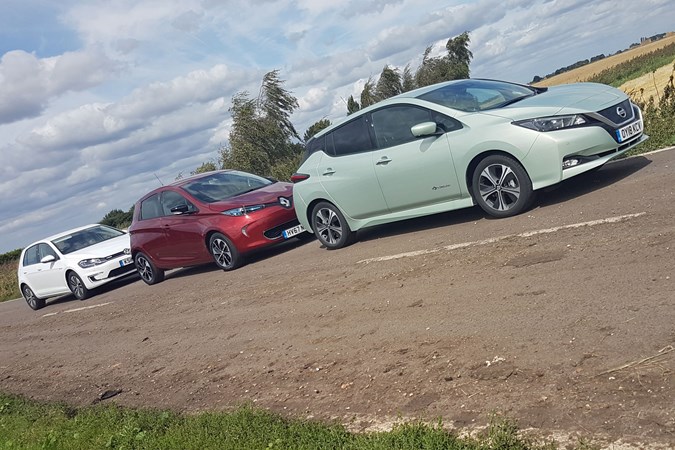
How to buy a used electric car: what to check
Right, onto the nitty gritty. How do you make sure you don’t end up with an expensive mistake? Buying a used EV is much like buying any other secondhand car, but with a few crucial differences
The usual checks still apply
Don’t forget the basics:
- MoT history: Look out for advisories, especially tyres, suspension and brakes. Just because EVs need less maintenance doesn’t mean owners keep up with the basics.
- Outstanding finance: A proper car history check is non-negotiable. You don’t want the bailiffs knocking on your door because someone else didn’t pay their loan.
- Accident damage: Check panel gaps and paint for clues to previous shunts.
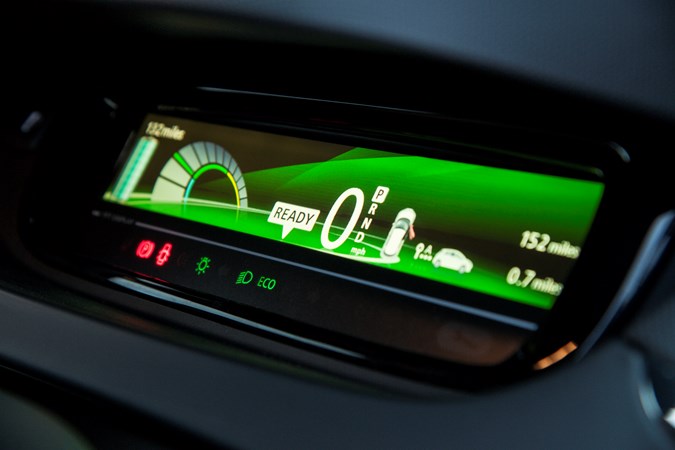
Battery health and warranties
Here’s the bit that separates EV buying from everything else: the battery. It’s the single most expensive bit of the car and the biggest thing to check – how long a battery lasts typically comes down to how car car is used.
- Most EVs have eight-year or 100,000-mile warranties, usually guaranteeing at least 70-to-80% battery capacity.
- In real life, batteries often last far longer. Nissan reckons the Leaf’s battery can last more than 20 years, and Warranty Direct once reported the Leaf had a failure rate of just 0.01% compared with 0.25% for petrol cars.
- Look for battery health reports in the service history. It’s your window into how much life the battery has left.
If you’re looking at an older (pre-2019) Renault, watch out for battery leases. Some of these cars were sold with separate monthly payments for the battery, which can quickly turn a bargain into a money pit.

Service history matters
Even though EVs don’t need oil changes or spark plugs, they’re not completely free of maintenance.
- Brake calipers and fluid still need periodic attention, especially because electric cars rely so much on regenerative braking, which can mean the physical brakes don’t get much use and can seize up if neglected.
- Some EVs have coolant systems for batteries or electronics, and these might need changing every few years, depending on the model. Not every EV has liquid cooling though, so check your car’s handbook or manufacturer’s schedule.
- And while most electric cars have simple, sealed single-speed transmissions that don’t officially need oil changes, some manufacturers recommend checking or replacing the transmission oil at higher mileages, especially if there’s been a leak or heavy use.
Giving the car a proper look over
Here’s how to avoid any nasty surprises.
- Charging cables: Check all the cables are there. Usually you’ll get a Type 2 cable for public chargers or home wallboxes, and a three-pin plug for slow domestic charging. Missing cables can cost hundreds to replace.
- Dashboard warning lights: Switch on the ignition and check all warning lights come on, then go out. Some less scrupulous sellers have been known to pull bulbs to hide problems like airbag or ABS faults.
- Infotainment system: Modern EVs live and die by their infotainment screens. This is where you’ll find charging data, range history and sat nav info. Make sure it all works as it should.
Top tip: Sat nav history can give you clues about how the car’s been used. Lots of long motorway trips and rapid charging sessions could mean extra battery wear. And don’t forget to check how old the maps are. Outdated maps mean missing charging points, which is a handy bargaining tool to chip down the price.

Check connected services
Many EVs come with connected services like:
- Remote climate control
- Smartphone apps for locking and unlocking
- Live charging data
Ask whether these features still work, or whether they need paid subscriptions or SIM cards. Some older cars lose these features if the subscriptions lapse.
Bodywork and interior details
Take your time with this bit. EVs sometimes spend ages parked up, so look for:
- Bodywork issues: Check for scratches, dents and poor paint repairs. BMW i3s and i8s have fancy carbonfibre bodies that can be eye-wateringly expensive to repair.
- Rubber seals: UV damage can crack seals if the car’s been parked outside for long periods.
- Headlights: Plastic lenses often go cloudy with age but can usually be polished back to life. Deep scratches and cracks are more troublesome.
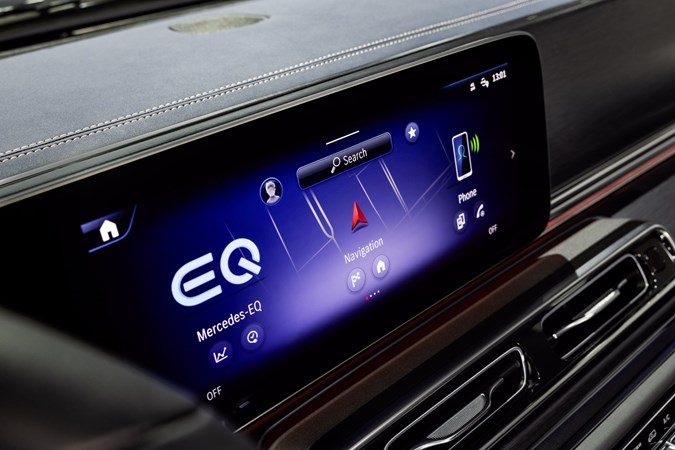
The test drive
A test drive is essential, even with an electric car. In fact, especially with an electric car if you’ve not driven one before. You might be so disorientated by the lack of engine noise and the instant response that you might not be fully on your guard. Here’s what to look out for:
- Listen for strange noises: EVs are quiet, so any rattles, squeaks or clonks stand out more. Drive slowly past a wall with the windows down and listen for echoes of odd noises.
- Suspension and steering: Feel for wandering, pulling or vibrations. Uneven tyre wear can hint at bigger problems.
- Regenerative braking: Try the one-pedal driving and check it feels smooth and predictable.
- Wheel bearings and CV joints: Listen for humming or rhythmic clicks when turning on full lock.
- Range drop: Drive at motorway speeds and watch how quickly the range drops. A tired battery will lose miles quickly.
- Charging test: If you can, plug the car into a rapid charger. It might cost a few quid, but it’s money well spent if it helps you avoid an expensive charging fault later.
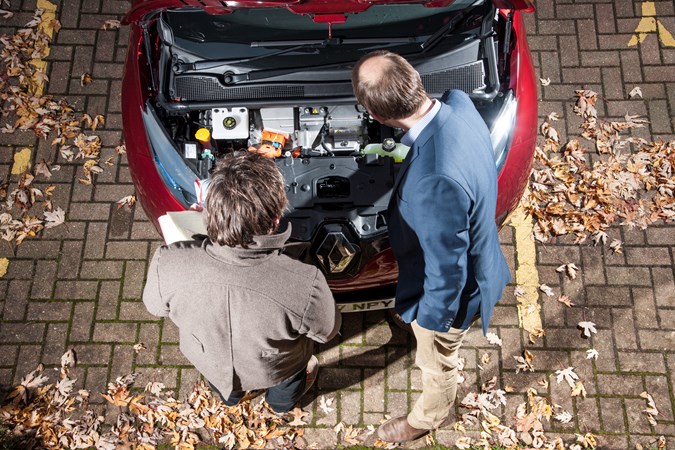
Final checks before buying
- Check under the bonnet for leaks (genuinely!), especially if the car has a liquid cooling system for the battery or motor. A sweet smell could mean leaking antifreeze, which some EVs use for thermal management.
- Make sure you have all the keys and test that the remote locking and start functions work properly.
- Confirm the accessory battery (the small 12V one) is healthy. If it fails, it can leave the entire car immobilised, even if the main drive battery is fully charged.
- Look for accessories like tyre repair kits, warning triangles and all the original charging cables and adapters. Missing items can be surprisingly expensive to replace.
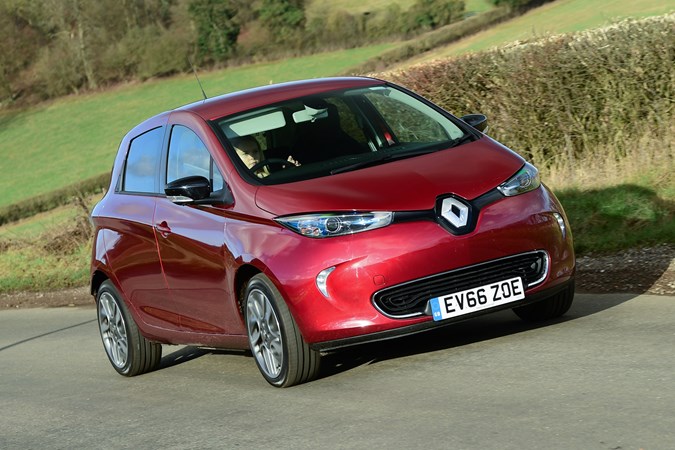
So, is buying a used electric car worth it?
Absolutely. Provided you go in with your eyes open, a used electric car can be a brilliant buy. They’re cheap to run, smooth to drive and surprisingly reliable. But there’s no getting away from the fact that buying an EV brings unique challenges, especially around battery health, technology features and public charging.
That’s why it pays to take your time. Check the paperwork, dig into the service history and get as long a test drive as you can. Don’t be afraid to ask awkward questions, or to walk away if something doesn’t add up.
Remember too that EVs are evolving at a rapid pace. What was cutting-edge three years ago might already feel a bit out of date in terms of charging speeds or tech features. So keep your eyes open for good deals on newer models, particularly as more electric company cars come onto the used market over the next couple of years.
The good news is, there’s never been a better time to consider buying used. Prices have dropped for many models, and as more EVs join Britain’s roads, the second-hand market is only going to get stronger.

Just so you know, we may receive a commission or other compensation from the links on this website - read why you should trust us.


